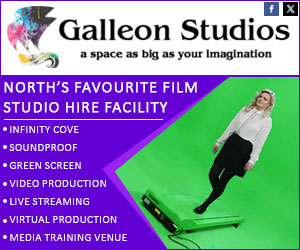Broadcast News
09/09/2014
IBC To Highlight New Technologies (Pt. 1)

Never previously has IBC gambled so heavily on using keynote presentations to attract bigger conference audiences, writes George Jarrett.
It will be the IBC where public broadcasters wave goodbye to the 700MHz band and knuckle down to fighting off the mobile broadband raiders while they establish a holding pattern with the 600 MHz and 500 MHz bands and develop technologies – like deploying DVB-T2 with an HEVC coding stream - in order to deliver more channels and use less spectrum doing it. IBC2025 might be the last to stage the great spectrum debate, which has already become the show’s longest running soap opera.
By then we should have had 8K production systems feeding 4K services to all consumers. At this IBC you will see much more communal certainty about higher frame rates, high dynamic range and immersive audio. When shooting with 4K cameras, crews are creating a ridiculous surplus of rushes, which is a discussion with the editing software vendors. For puzzling reasons, finishing 4K projects often takes longer than finishing film projects. But the big 4K debate at IBC will be whether services are delivered via broadband first.
In this second preview we have again tried to cover the main product or service news from each exhibitor listed. As with every IBC there will such a huge variety of favorites – maybe Quantel’s LiveTouch, perhaps Camera Corps’ new Stump Cam or the Boris VFX plug-in suite. Production people might love the Fraunhofer light field and multi-camera processing demo. Production crews will grab at the Transvideo StarliteHD monitor.
Quantel (7.A20) acquired Snell (8.B70) too late to put the combined group on one stand. The hall 7 attractions start with LiveTouch, a scalable new studio sports highlights system. This is comprised of a new server, a new software client, a new panel and fresh middleware: it links clients with content across a server cluster. The panel is one of the best features, along with bidirectional editor integration direct into the server cluster.
Enterprise sQ boasts a raft of editorial improvements, as well as a new eight-port version of sQ Record that saves space in crowded galleries and machine rooms. Users get support for XAVC media across the system in both automated and manual workflows and new support for 4K media. Another new element is Fileflow 2, which adds more flexibility, easier IT integration and a faster workflow to Enterprise sQ file I/O. The new security features folder-based credentials, and FTP client support, make it easier to integrate into large IT systems.
QTube is a production everywhere tool. Genetic Engineering 2, for postproduction, is a shared storage solution aimed at users of Pablo Rio colour and finishing systems. This system has its sixth new software release this year, so look for S-log3/S-Gamut3 support, the latest ARRI SDK, DCP import and soft mount, ProRes 4444 XQ and 4K output support on the AJA Kona 3G. For an IP production demo the revolutionQ will be used to record and edit live IP streams.
Quantel and Snell will offer a vision for the IP-based facility of the future. The other key demo will be of Wold Cup 4K post workflow: the Pablo Rio and GE2 were combined to create the 4K 60p highlights from Brazil.
Camera Corps (11.E55 as part of the Vitec Videocom exhibit) has a new version of its Cricket Stump Cam. The big advance from version 2, which has been integrated inside the middle stump at both ends for five years, is that version three is more compact, and can be completely housed inside a regulation-gauge cricket stump. This gives grounds and broadcasters the freedom to place cameras in the middle, off or leg stumps. Each camera can be configured with a choice of 50 degree, 100 or 128 degree lenses to allow tight, wide or super wide shots. The Version 3 Cricket Stump Cam system consists of four cameras; two for each wicket. The classic arrangement would be to position one camera with a tight-angle lens facing forward to capture images of the bowler and the oncoming ball. The second camera, fitted with a super wide lens, is then ideally placed to televise the wicket keeper. All four feeds are multiplexed onto single-mode fibre.
Adder Technology (7.C30) has new version/firmware news concerning its ADDERLink Infinity systems. These allow users and their computing resources to be separated by huge distances, with no loss in video resolution or quality. The improved firmware offers faster switching, 60 fps, and full frame performance.
Looking for individual products, the IP-based 1002 version has an extra fiber module to initiate dual network redundancy and performance to the single head range. The additional port ensures that signals can be extended over significant distances. Aimed at broadcast and post applications, the Adder CCS-Pro4 is a professional KM switch for the use and control of multiple systems and screens on a single desk, from a single mouse and keyboard. Users can seamlessly switch between multiple computers alongside an intuitive web interface. The ADDERLink X-DVI Pro DL is a dual link, point-to-point DVI extender. It offers you full dual link resolution capability up to 2560x1600. It will transmit a dual link video stream along with audio over a single CATx cable. For covering 4K requirements, Adder has the ADDERLink XD522 display port/ extender.
Tedial (8.B41) will major on its new media exchange platform (MEP), inspired by the multi-screen explosion impacting on broadcasters and telcos. Faced with a massive, often unpredictable increase in the amount of media they exchange during production and postproduction processes - and when packaging for delivery to multiple platforms – users have found that initiating thousands of drag-and-drop operations daily using fixed folders is ridiculously inefficient. To the rescue comes the Tedial MEP, designed specifically to enable content creators, broadcasters, pay-TV operators, service providers and telcos work collectively on media, both securely and efficiently. The real-world complexities of multimedia content exchange and packaging can be streamlined, whilst still using standard third-party IP managers and cloud based storage and distribution solutions. Key things are the automated workflows and the global monitoring of media exchange processes. Tedial will also be highlighting new Adobe Premiere Pro CC editing functionality within its Tarsys MAM system.
Bluefish444 (7.J07), a division and brand name of Bluefish Technologies, has announced HD, SD and SDI support for Avid’s Media Composer V8. This required a new Windows 7 and 8 installer/driver, 5.12.0, that is compatible with the Create | 3D Ultra and Epoch | 4K Supernova supporting up to HD YUV/RGB SDI I/O for both Media Composer V8 and the Symphony V8 option.
Windows Installer 5.12.0 is available for free from the Bluefish444 home page. Also new is the compatibility update to the complimentary Fluid application ingeSTore, and DNxHD ingeSTore. This is also on the home page.
Read George's article in BFV online.
(IT)
It will be the IBC where public broadcasters wave goodbye to the 700MHz band and knuckle down to fighting off the mobile broadband raiders while they establish a holding pattern with the 600 MHz and 500 MHz bands and develop technologies – like deploying DVB-T2 with an HEVC coding stream - in order to deliver more channels and use less spectrum doing it. IBC2025 might be the last to stage the great spectrum debate, which has already become the show’s longest running soap opera.
By then we should have had 8K production systems feeding 4K services to all consumers. At this IBC you will see much more communal certainty about higher frame rates, high dynamic range and immersive audio. When shooting with 4K cameras, crews are creating a ridiculous surplus of rushes, which is a discussion with the editing software vendors. For puzzling reasons, finishing 4K projects often takes longer than finishing film projects. But the big 4K debate at IBC will be whether services are delivered via broadband first.
In this second preview we have again tried to cover the main product or service news from each exhibitor listed. As with every IBC there will such a huge variety of favorites – maybe Quantel’s LiveTouch, perhaps Camera Corps’ new Stump Cam or the Boris VFX plug-in suite. Production people might love the Fraunhofer light field and multi-camera processing demo. Production crews will grab at the Transvideo StarliteHD monitor.
Quantel (7.A20) acquired Snell (8.B70) too late to put the combined group on one stand. The hall 7 attractions start with LiveTouch, a scalable new studio sports highlights system. This is comprised of a new server, a new software client, a new panel and fresh middleware: it links clients with content across a server cluster. The panel is one of the best features, along with bidirectional editor integration direct into the server cluster.
Enterprise sQ boasts a raft of editorial improvements, as well as a new eight-port version of sQ Record that saves space in crowded galleries and machine rooms. Users get support for XAVC media across the system in both automated and manual workflows and new support for 4K media. Another new element is Fileflow 2, which adds more flexibility, easier IT integration and a faster workflow to Enterprise sQ file I/O. The new security features folder-based credentials, and FTP client support, make it easier to integrate into large IT systems.
QTube is a production everywhere tool. Genetic Engineering 2, for postproduction, is a shared storage solution aimed at users of Pablo Rio colour and finishing systems. This system has its sixth new software release this year, so look for S-log3/S-Gamut3 support, the latest ARRI SDK, DCP import and soft mount, ProRes 4444 XQ and 4K output support on the AJA Kona 3G. For an IP production demo the revolutionQ will be used to record and edit live IP streams.
Quantel and Snell will offer a vision for the IP-based facility of the future. The other key demo will be of Wold Cup 4K post workflow: the Pablo Rio and GE2 were combined to create the 4K 60p highlights from Brazil.
Camera Corps (11.E55 as part of the Vitec Videocom exhibit) has a new version of its Cricket Stump Cam. The big advance from version 2, which has been integrated inside the middle stump at both ends for five years, is that version three is more compact, and can be completely housed inside a regulation-gauge cricket stump. This gives grounds and broadcasters the freedom to place cameras in the middle, off or leg stumps. Each camera can be configured with a choice of 50 degree, 100 or 128 degree lenses to allow tight, wide or super wide shots. The Version 3 Cricket Stump Cam system consists of four cameras; two for each wicket. The classic arrangement would be to position one camera with a tight-angle lens facing forward to capture images of the bowler and the oncoming ball. The second camera, fitted with a super wide lens, is then ideally placed to televise the wicket keeper. All four feeds are multiplexed onto single-mode fibre.
Adder Technology (7.C30) has new version/firmware news concerning its ADDERLink Infinity systems. These allow users and their computing resources to be separated by huge distances, with no loss in video resolution or quality. The improved firmware offers faster switching, 60 fps, and full frame performance.
Looking for individual products, the IP-based 1002 version has an extra fiber module to initiate dual network redundancy and performance to the single head range. The additional port ensures that signals can be extended over significant distances. Aimed at broadcast and post applications, the Adder CCS-Pro4 is a professional KM switch for the use and control of multiple systems and screens on a single desk, from a single mouse and keyboard. Users can seamlessly switch between multiple computers alongside an intuitive web interface. The ADDERLink X-DVI Pro DL is a dual link, point-to-point DVI extender. It offers you full dual link resolution capability up to 2560x1600. It will transmit a dual link video stream along with audio over a single CATx cable. For covering 4K requirements, Adder has the ADDERLink XD522 display port/ extender.
Tedial (8.B41) will major on its new media exchange platform (MEP), inspired by the multi-screen explosion impacting on broadcasters and telcos. Faced with a massive, often unpredictable increase in the amount of media they exchange during production and postproduction processes - and when packaging for delivery to multiple platforms – users have found that initiating thousands of drag-and-drop operations daily using fixed folders is ridiculously inefficient. To the rescue comes the Tedial MEP, designed specifically to enable content creators, broadcasters, pay-TV operators, service providers and telcos work collectively on media, both securely and efficiently. The real-world complexities of multimedia content exchange and packaging can be streamlined, whilst still using standard third-party IP managers and cloud based storage and distribution solutions. Key things are the automated workflows and the global monitoring of media exchange processes. Tedial will also be highlighting new Adobe Premiere Pro CC editing functionality within its Tarsys MAM system.
Bluefish444 (7.J07), a division and brand name of Bluefish Technologies, has announced HD, SD and SDI support for Avid’s Media Composer V8. This required a new Windows 7 and 8 installer/driver, 5.12.0, that is compatible with the Create | 3D Ultra and Epoch | 4K Supernova supporting up to HD YUV/RGB SDI I/O for both Media Composer V8 and the Symphony V8 option.
Windows Installer 5.12.0 is available for free from the Bluefish444 home page. Also new is the compatibility update to the complimentary Fluid application ingeSTore, and DNxHD ingeSTore. This is also on the home page.
Read George's article in BFV online.
(IT)
Top Related Stories
Click here for the latest broadcast news stories.
07/10/2024
Ikegami Unveils New UHL-X40 4K-UHD HDR Camera At NAB New York
Ikegami announces its product lineup for NAB NY 2024. Launching on Ikegami booth 1027 will be the ultra-compact UHL-X40 4K-UHD/HD 3-CMOS camera. Also
Ikegami Unveils New UHL-X40 4K-UHD HDR Camera At NAB New York
Ikegami announces its product lineup for NAB NY 2024. Launching on Ikegami booth 1027 will be the ultra-compact UHL-X40 4K-UHD/HD 3-CMOS camera. Also
09/06/2014
4K OK? Understanding UltraHD... (Pt 2)
"The latest workstations and professional laptops are now up to the task of 4K content creation and NLE developers are all beginning to support native
4K OK? Understanding UltraHD... (Pt 2)
"The latest workstations and professional laptops are now up to the task of 4K content creation and NLE developers are all beginning to support native
12/06/2015
New Partnerships, New Solutions And Treading New Territory At NAB, Pt 2
Continued from Part 1... Panasonic, somewhat swamped by Canon space wise, led with the P2 Cast cloud-based news production system (Dalet had put up a
New Partnerships, New Solutions And Treading New Territory At NAB, Pt 2
Continued from Part 1... Panasonic, somewhat swamped by Canon space wise, led with the P2 Cast cloud-based news production system (Dalet had put up a
12/06/2015
New Partnerships, New Solutions And Treading New Territory At NAB, Pt 1
Looking back at NAB, Hans Hoffman, the EBU's Programme Manager of media technology and innovation, believes that the number one finding was the indust
New Partnerships, New Solutions And Treading New Territory At NAB, Pt 1
Looking back at NAB, Hans Hoffman, the EBU's Programme Manager of media technology and innovation, believes that the number one finding was the indust
04/06/2014
BroadcastAsia2014: 4K To Transform Onscreen Viewing
HD (high definition) viewing will soon be a technology of the past, as a result of the proliferation of 4K coming Asia's way. 4K, also commonly known
BroadcastAsia2014: 4K To Transform Onscreen Viewing
HD (high definition) viewing will soon be a technology of the past, as a result of the proliferation of 4K coming Asia's way. 4K, also commonly known
31/03/2025
Express Media Acquires Ikegami UHK-X700 4K UHD Camera Systems
Express Media has expanded its rental portfolio with the purchase of Ikegami UHK-X700 4K UHD camera systems and BSX-100 25G optical fibre base station
Express Media Acquires Ikegami UHK-X700 4K UHD Camera Systems
Express Media has expanded its rental portfolio with the purchase of Ikegami UHK-X700 4K UHD camera systems and BSX-100 25G optical fibre base station
13/09/2018
New Marshall 4K, UHD & High-Speed Mini Cameras
Debuted at IBC 2018, Marshall's all-new CV380-CS, CV420-CS & CV506-H12 mini cameras will be available throughout Europe, distributed by MarCam Europe
New Marshall 4K, UHD & High-Speed Mini Cameras
Debuted at IBC 2018, Marshall's all-new CV380-CS, CV420-CS & CV506-H12 mini cameras will be available throughout Europe, distributed by MarCam Europe
08/04/2015
Canon Introduces New 4K Cameras
Canon has unveiled its next generation of input-to-output solutions for 4K production workflows. The range includes the DP-V2410, a 24-inch 4K referen
Canon Introduces New 4K Cameras
Canon has unveiled its next generation of input-to-output solutions for 4K production workflows. The range includes the DP-V2410, a 24-inch 4K referen
25/02/2015
Visual Impact Orders Modular 4k Cameras For New TV Drama
The Panasonic VariCam 35 has been selected for a major new TV drama, set to be screened in the Autumn. Visual Impact has ordered six of the modular 4K
Visual Impact Orders Modular 4k Cameras For New TV Drama
The Panasonic VariCam 35 has been selected for a major new TV drama, set to be screened in the Autumn. Visual Impact has ordered six of the modular 4K
18/04/2012
Canon Launch Two New 4K Cameras
Canon has been showing off a prototype of a new EOS digital-cinema camera, the C500, at NAB 2012. This is the next development of the camera range tha
Canon Launch Two New 4K Cameras
Canon has been showing off a prototype of a new EOS digital-cinema camera, the C500, at NAB 2012. This is the next development of the camera range tha
09/11/2012
4K Or Not 4K – That Is The Question -Part Two
Native 4K Digital Cameras Systems RED RED EPIC and RED SCARLET RED was the initial trailblazer on the march to 4K. Although the RED One was initially
4K Or Not 4K – That Is The Question -Part Two
Native 4K Digital Cameras Systems RED RED EPIC and RED SCARLET RED was the initial trailblazer on the march to 4K. Although the RED One was initially
09/11/2012
4K Or Not 4K – That Is The Question
A producer’s guide to the pros and cons of shooting in 4K What is 4K? Whether a video format is either 'standard' or 'high definition' has always been
4K Or Not 4K – That Is The Question
A producer’s guide to the pros and cons of shooting in 4K What is 4K? Whether a video format is either 'standard' or 'high definition' has always been
24/04/2014
Sony Adds 4K Live Streaming Support To BRAVIA™ 4K Ultra HD TVs
From August this year, every BRAVIA™ 4K Ultra HD TV owner will be able to enjoy video content streamed with the increasingly popular HEVC (H.265) stan
Sony Adds 4K Live Streaming Support To BRAVIA™ 4K Ultra HD TVs
From August this year, every BRAVIA™ 4K Ultra HD TV owner will be able to enjoy video content streamed with the increasingly popular HEVC (H.265) stan
09/06/2014
4K OK? Understanding UltraHD... (Pt 1)
In a bid to get his head around the intricacies of 4K format ahead of this summer's landmark broadcasting event, editor Iain Todd spoke to some indust
4K OK? Understanding UltraHD... (Pt 1)
In a bid to get his head around the intricacies of 4K format ahead of this summer's landmark broadcasting event, editor Iain Todd spoke to some indust
29/04/2014
Asia Gears Up For 4K
4K is "coming Asia's way," according to the organisers of BroadcastAsia, the digital multimedia and technology conference taking place this year in Si
Asia Gears Up For 4K
4K is "coming Asia's way," according to the organisers of BroadcastAsia, the digital multimedia and technology conference taking place this year in Si















